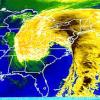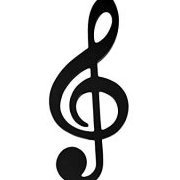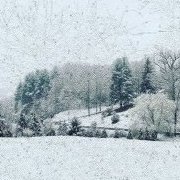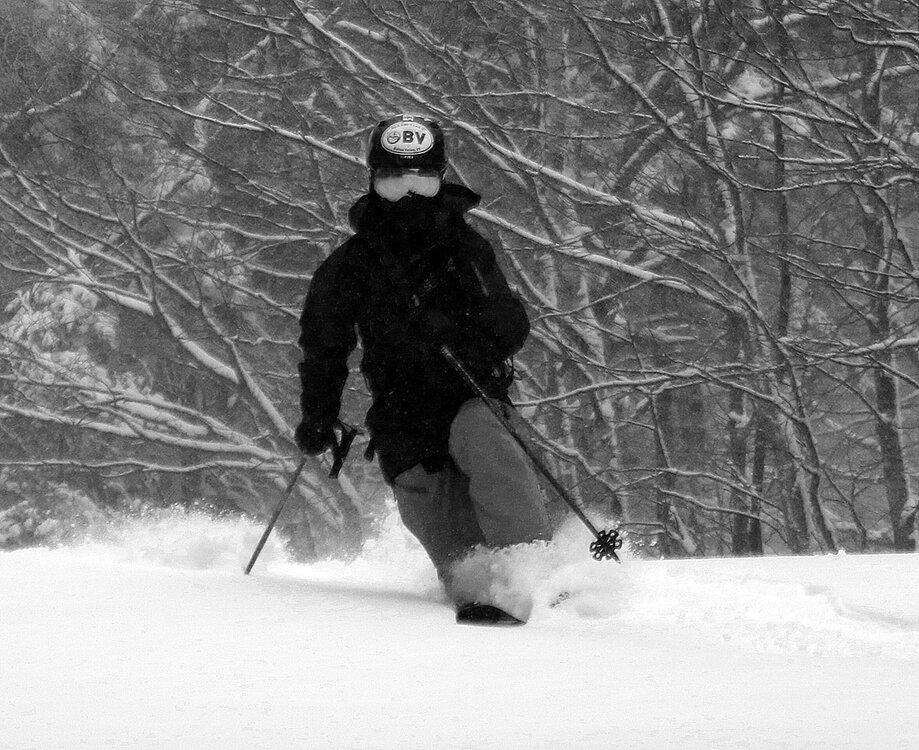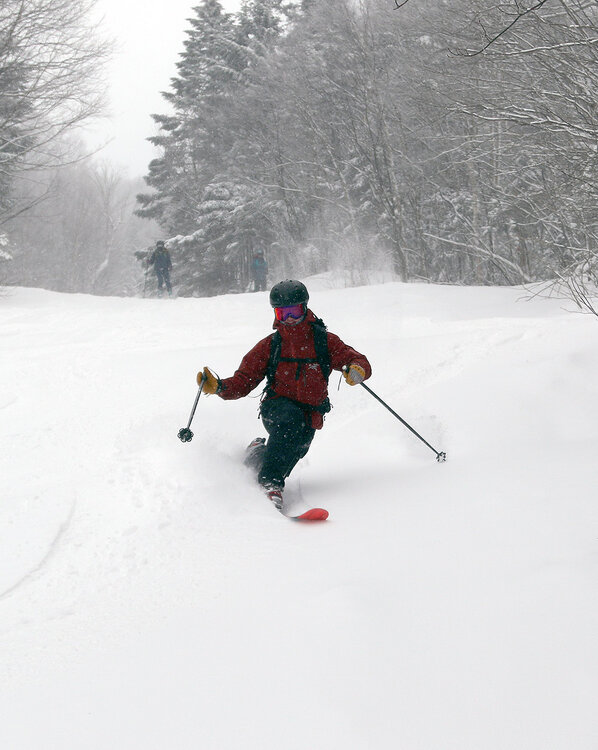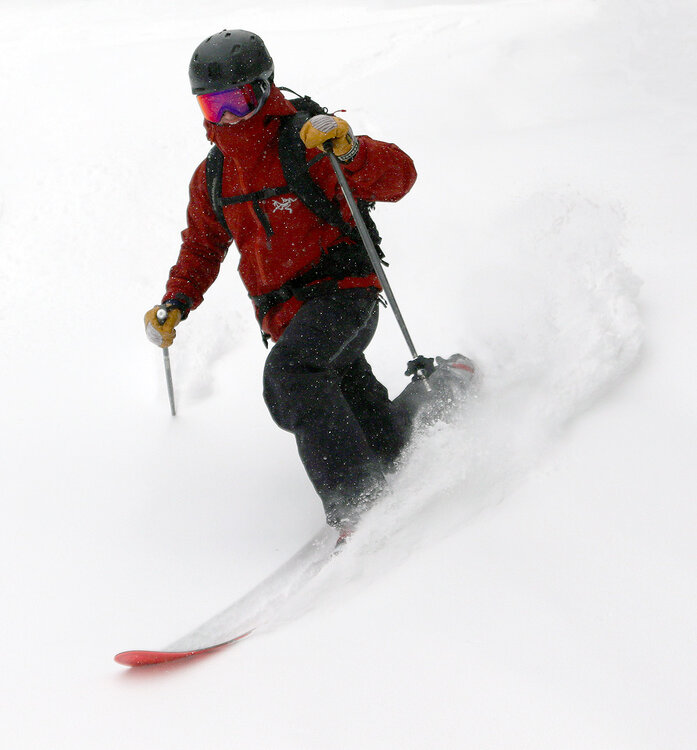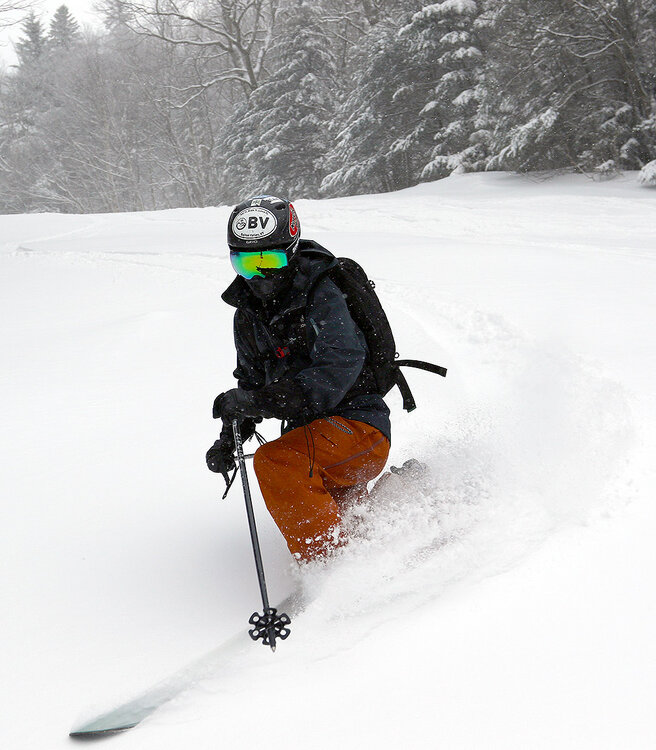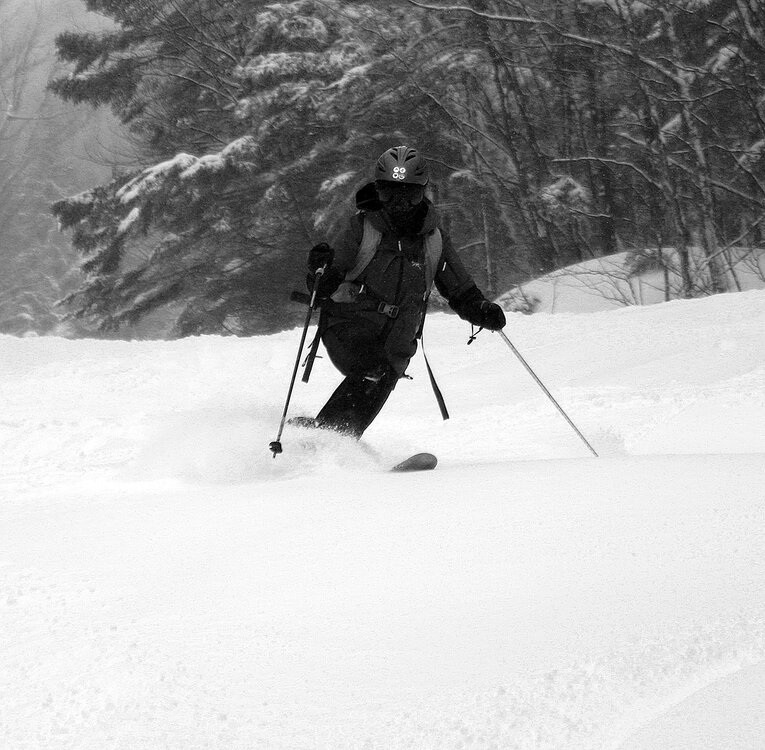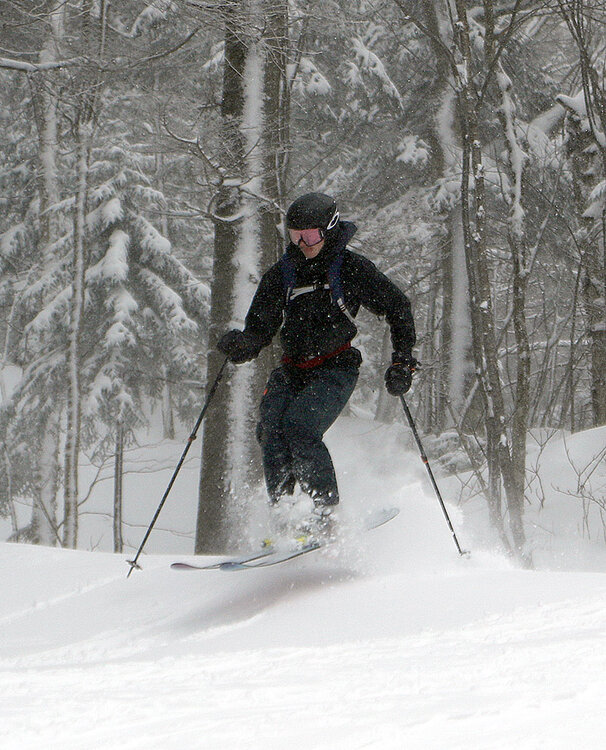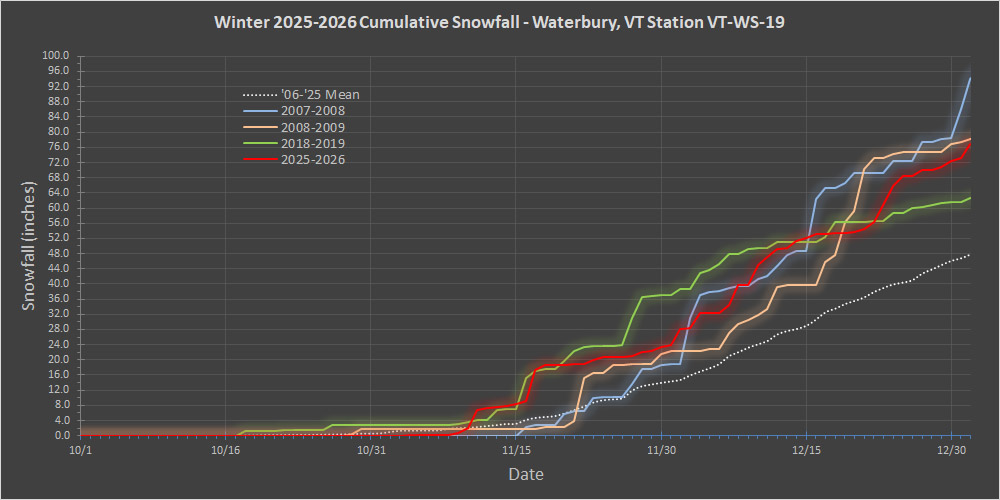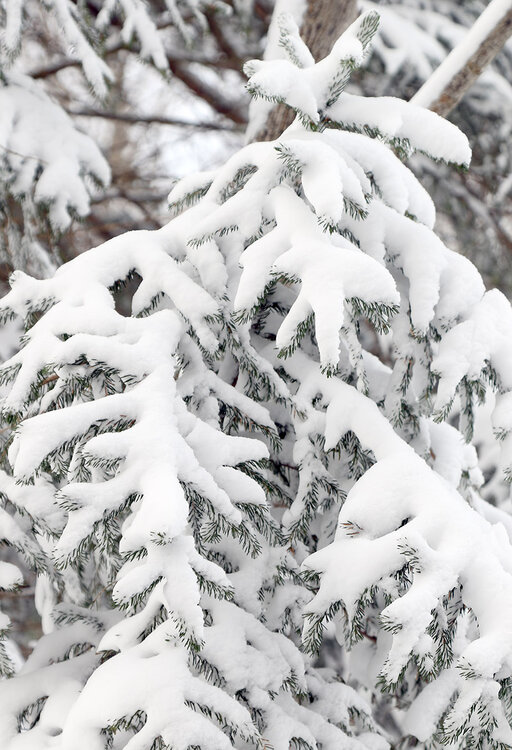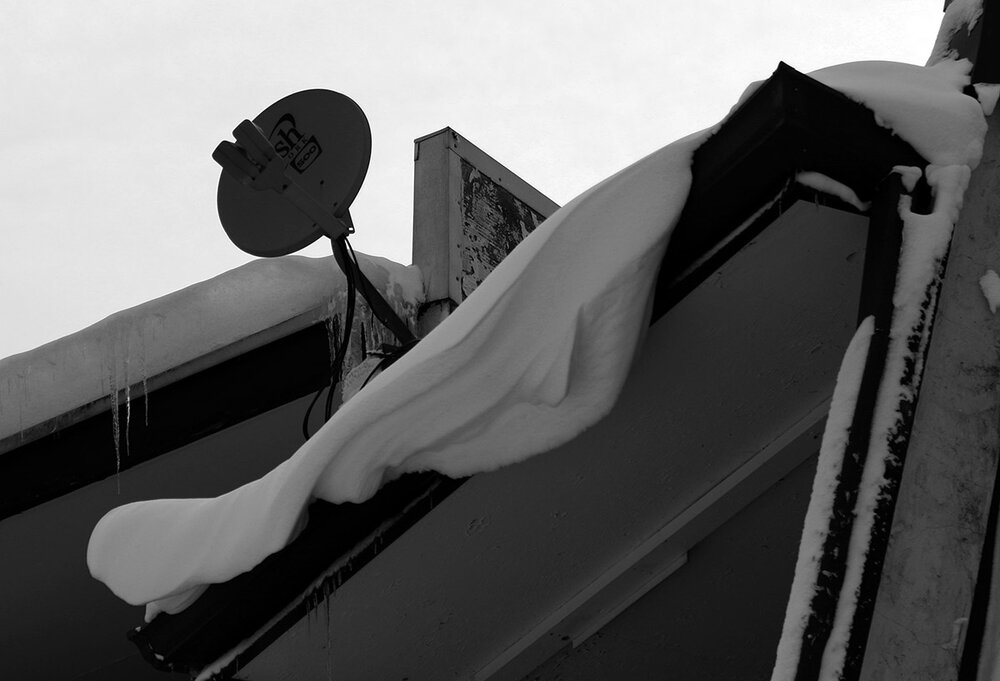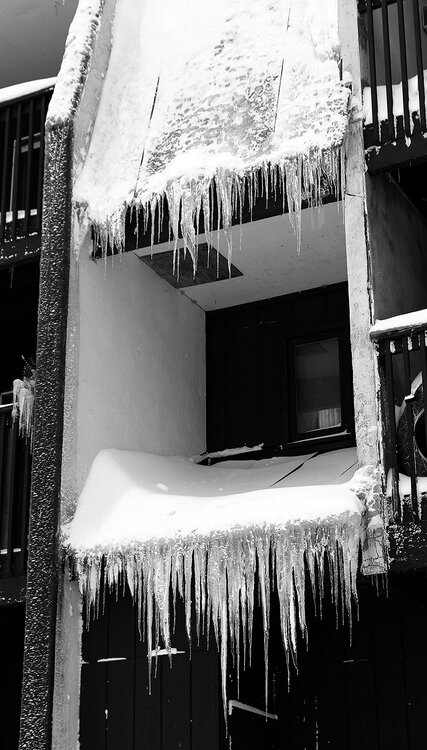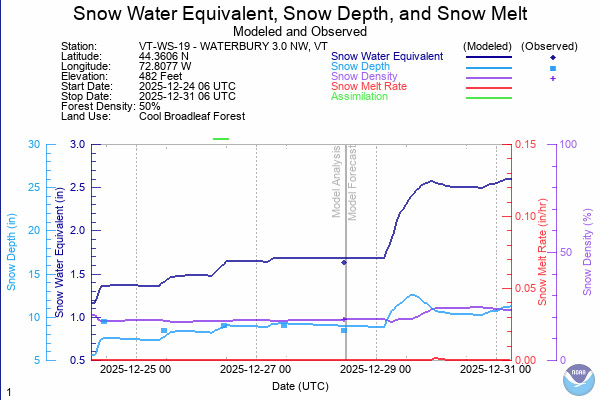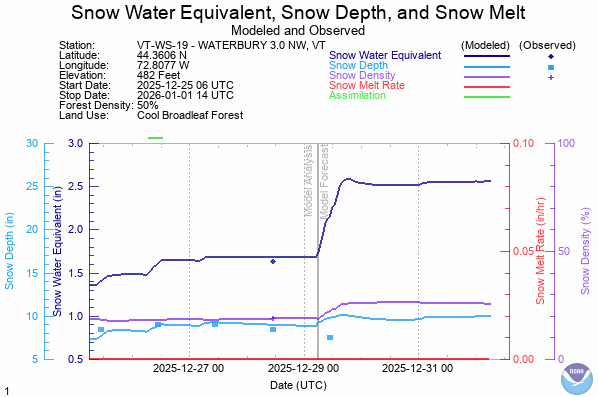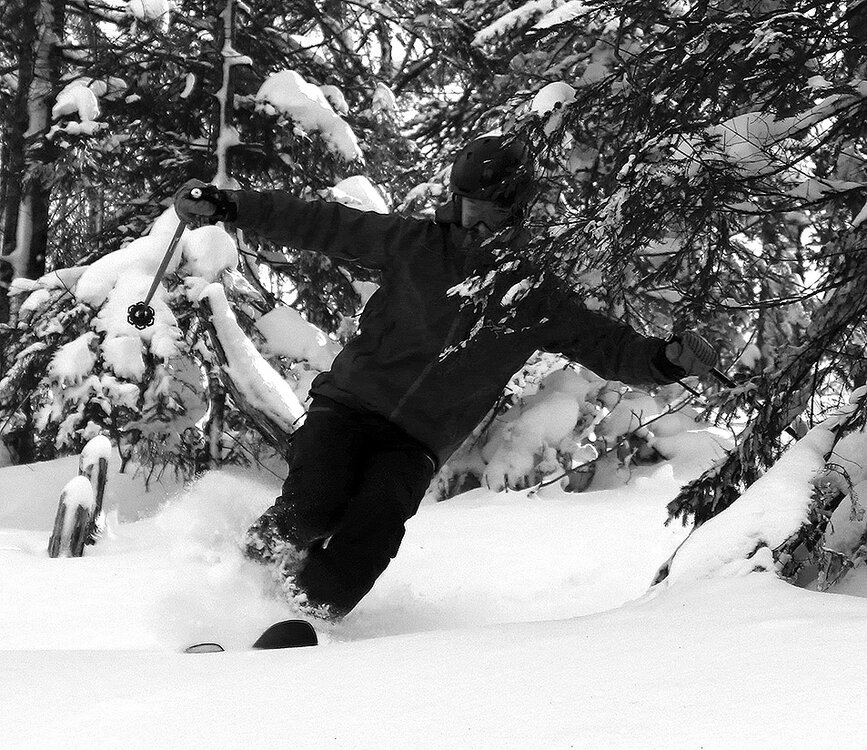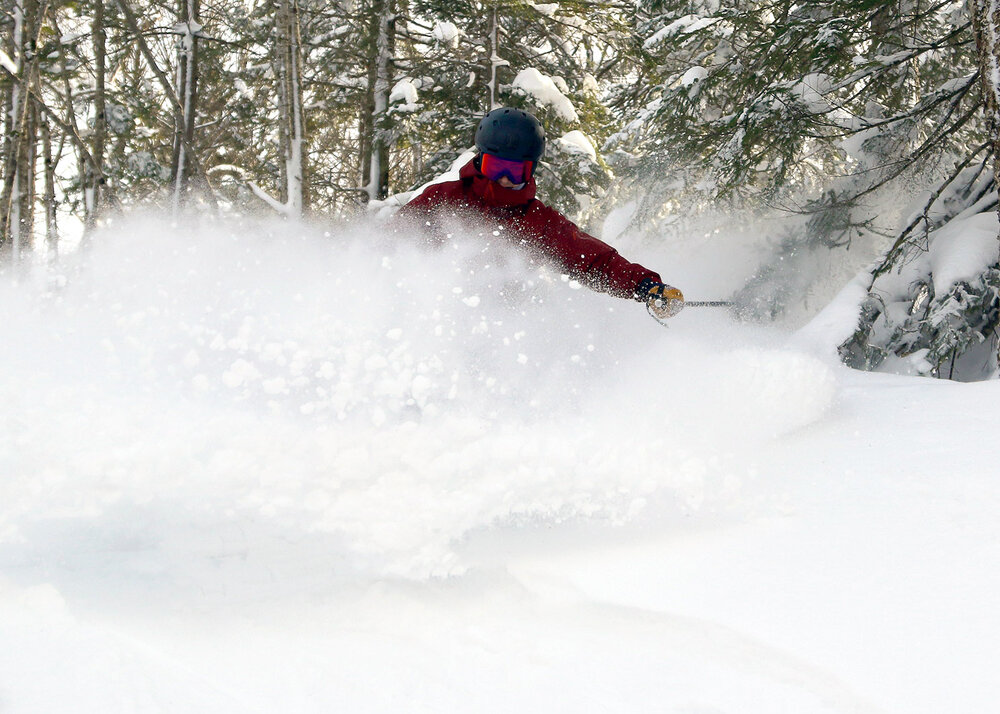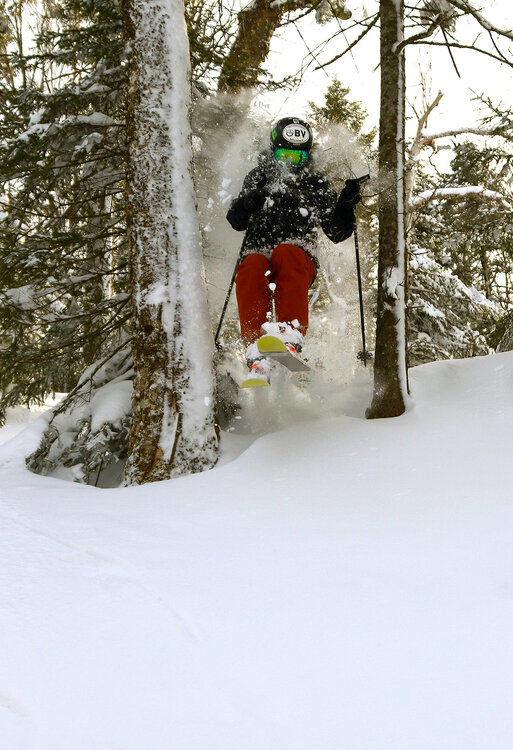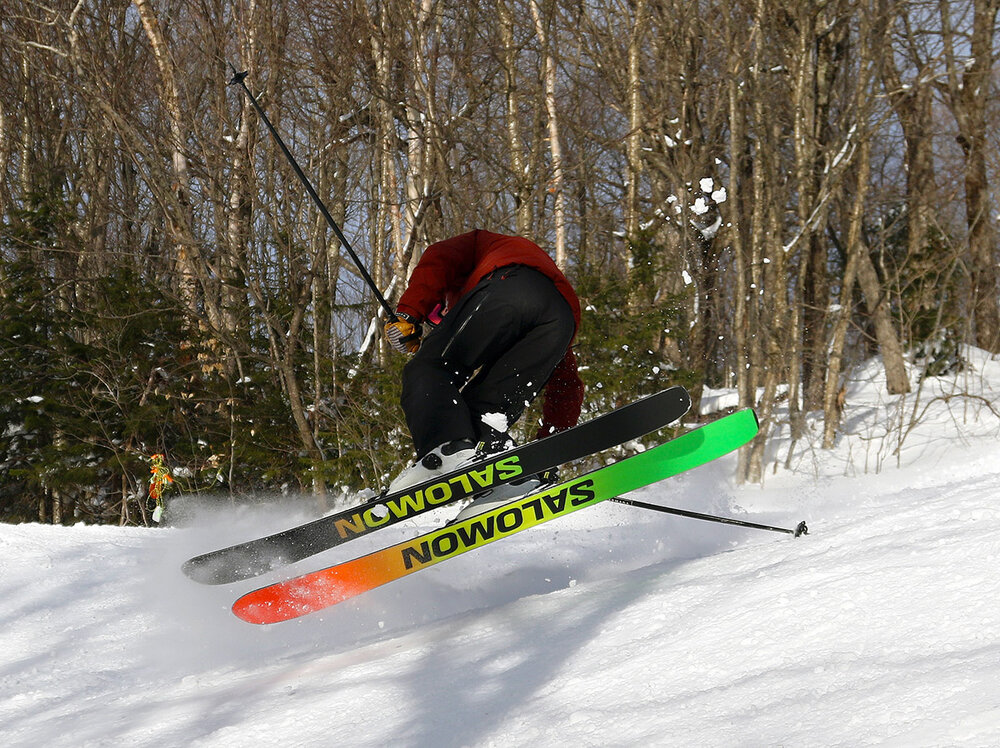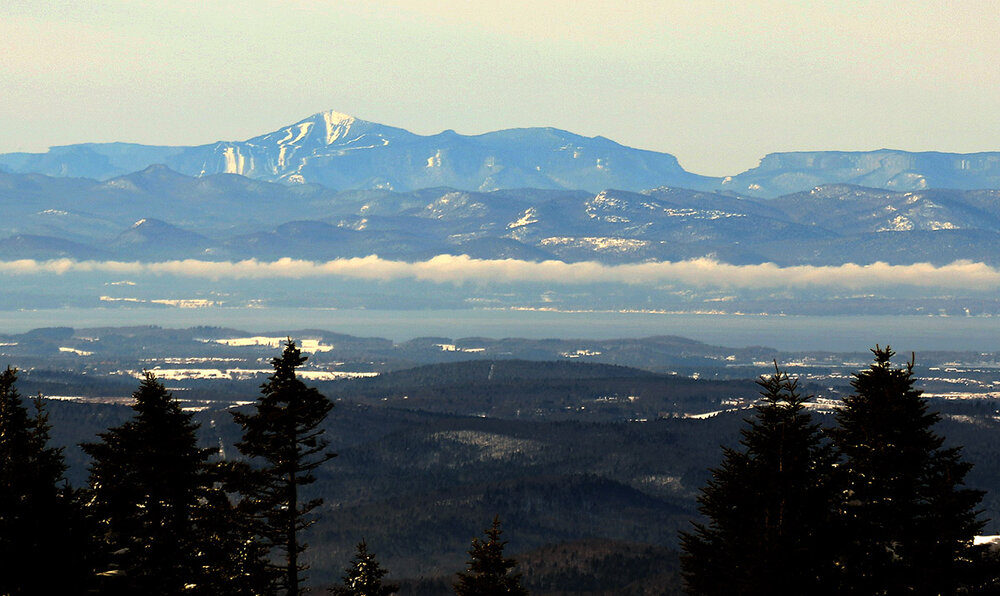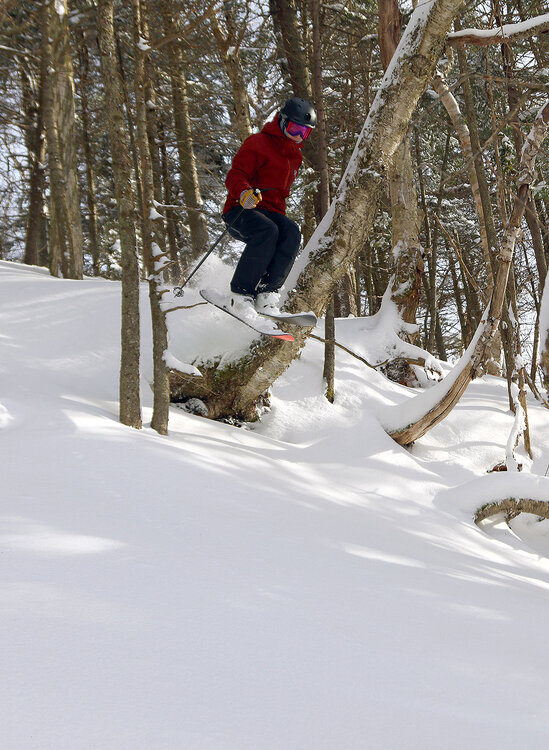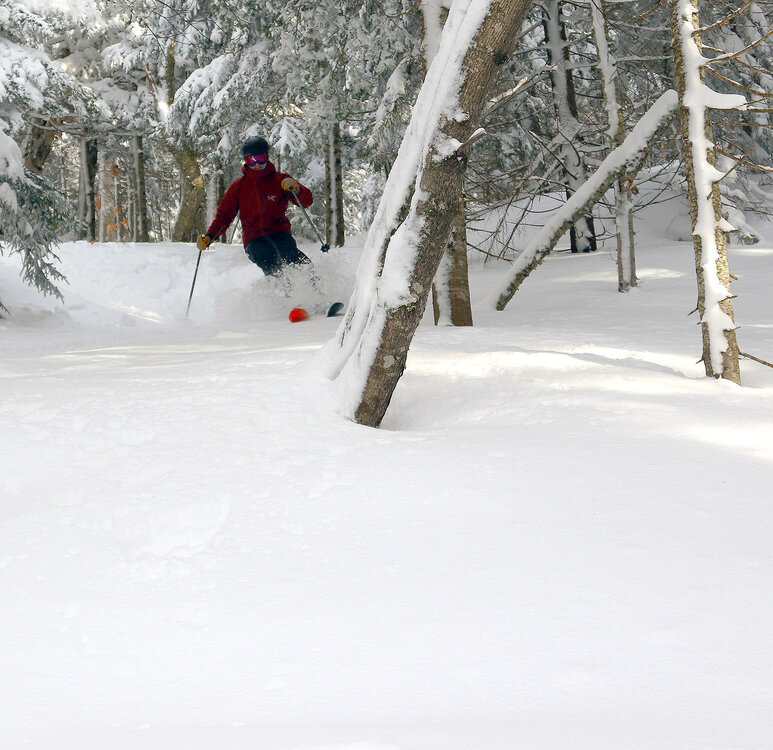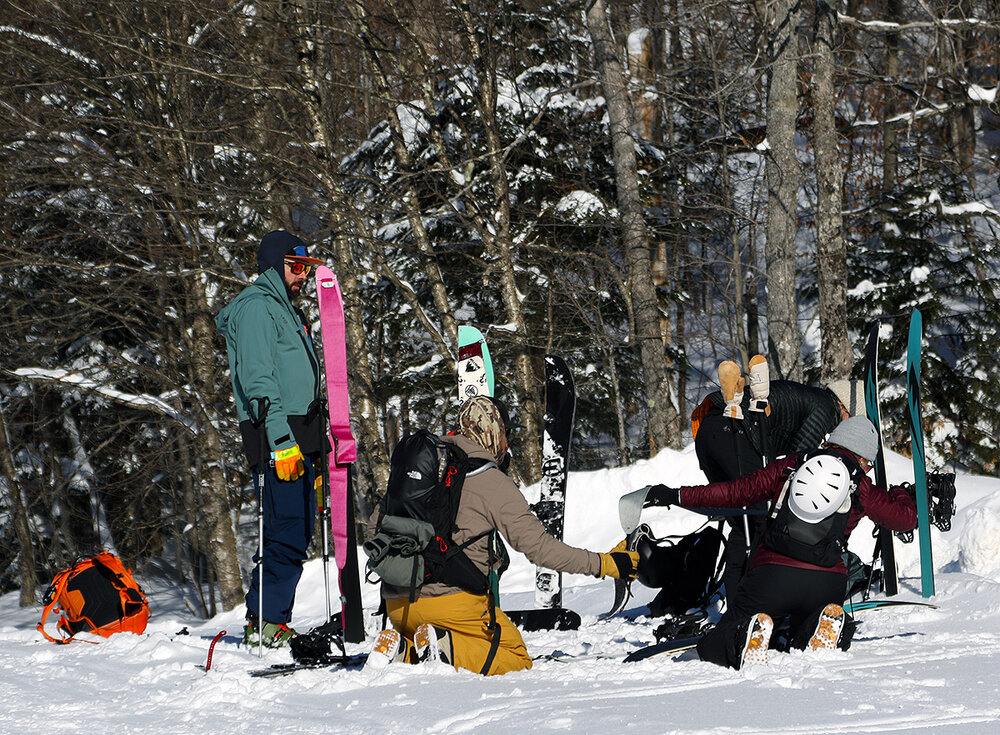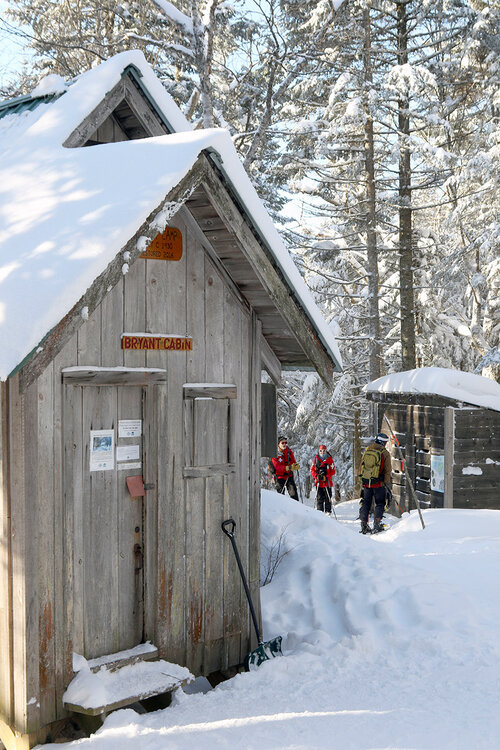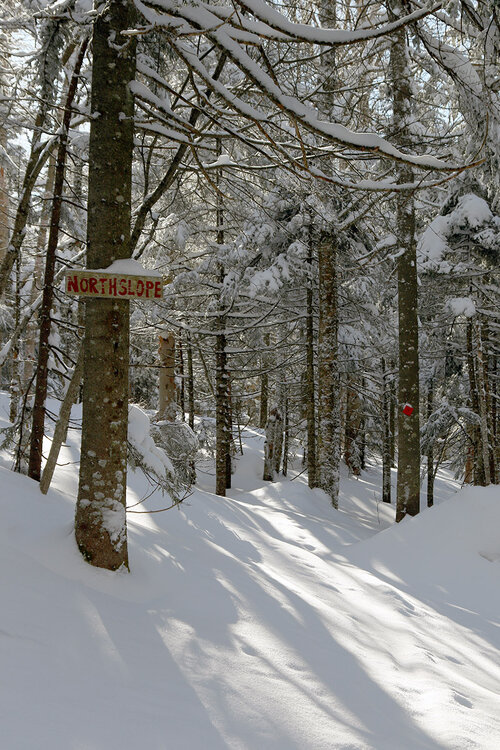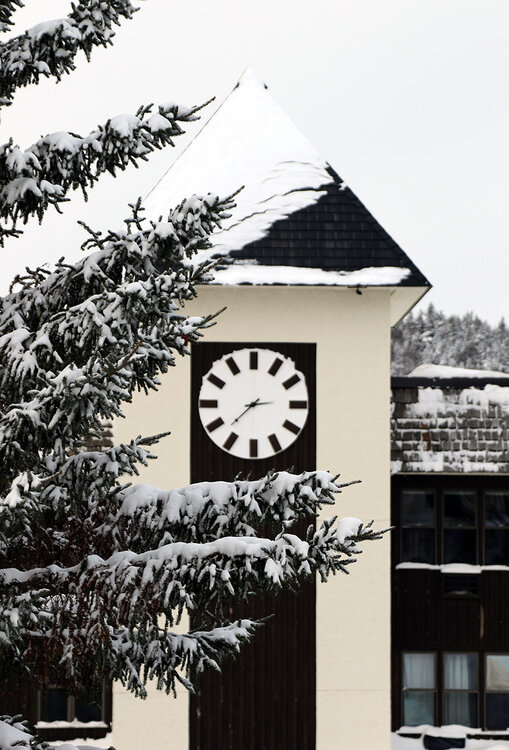-
Posts
6,375 -
Joined
-
Last visited
About J.Spin

Contact Methods
-
Website URL
http://www.JandEproductions.com
Profile Information
-
Four Letter Airport Code For Weather Obs (Such as KDCA)
KMPV
-
Gender
Male
-
Location:
Waterbury, VT
-
Interests
Skiing, Snow, Snowboarding, Outdoors, Winter Weather, Photography
Recent Profile Visitors
8,833 profile views
-
Thanks for the update PF – and well put with regard to explaining what’s out there. As you can see in my Bolton report from my post above, our experience was very much the same yesterday, but we didn’t even go near any high-angle terrain because I knew it just wasn’t really worth it. The base is clearly there, and there’s plenty of terrain available, but we’re going to need a solid resurfacing to get back to the generally excellent conditions we’ve seen over the past several weeks. That will require a solid large storm cycle, or a good number of bread and butter systems based on the subsurfaces I’ve encountered. We’ll need a system or two with some meat in them. There are some storms out there in the models, but it doesn’t look like a real slam dunk bread and butter pattern for the next couple of weeks as far as I can see, so it might be a little while before the mountains get back to pleasant surfaces. I’m OK with a bit of a slow down in conditions though – looking at my records I see that I’ve had almost 30 ski outings so far this season, and that’s a lot to pack into a couple of months with everything else going on in life. That’s well ahead of my typical November/December pace, since the seasons don’t always take off quite this fast with such prodigious snowpack. It’s easy to get out during the holiday period but packing it during the fall takes a lot of planning. We’ll roll with whatever Mother Nature decides to give us though, and having that fantastic snowpack in place means that conditions should be good to go as soon as that liquid equivalent comes along.
-
With the mountains picking up several inches of additional snow from our most recent clipper system, the family along with some friends headed up for some holiday season turns at Bolton Valley yesterday. Temperatures were cold – it was in the upper single digits F on the mountain for the start of the day, and it was only expected to get colder as the day went along. With that in mind, we decided to just head up for a quick tour in the morning via the Wilderness Uphill Route before the Wilderness Chair started loading. Up at the resort it was quite windy in exposed areas, and snow was still falling, so here was certainly a January feel. Based on my reconnaissance tour on Wednesday, I recommended we just stick to lower-angle terrain because even with the new snow, I didn’t think there were be enough liquid equivalent to support good turns on anything steeper than that. So the six of us toured up to ~2,700’ on Cougar and descended from there. Despite the additional snow for yesterday’s tour, I think that turns might have been a bit better on Wednesday. We were actually one of the first groups hitting that terrain for the day, so we had access to plenty of untracked snow, but the perceived slight drop in ski conditions might have been due to additional traffic on the earlier snow. Temperatures in the single digits F meant that the snow was somewhat slow as well, so that was kind of a knock against the skiing – you just didn’t glide that well, and that can be important on lower-angle terrain. After our tour, my younger son and his friends decided to hop on the Wilderness Chair for a lift-served run while the rest of us hit the base lodge, and they had fun, but the conditions weren’t good enough that it was worth hanging around to brave more of those cold temperatures and winds. Overall, it was great to get out for the tour, but even with the couple rounds of snow we’ve seen in the past few days, there’s just hasn’t been enough liquid equivalent set down yet to be anywhere near a real resurfacing. That, and the relatively cold temperatures mean that the skiing is there, but it’s just not back to anything great yet. The snowpack is quite robust though, so as soon as we get that resurfacing, the local resorts should be set up for some excellent skiing again.
-
Data collection for December 2025 is complete, so we can see how it played out via the red trace in the updated snowfall progression plot below. Around mid-month, December had accumulated about 30 inches of snow, but the productive bread and butter pattern from the first half of the month slowed down a bit, and we hit that relative lull you can see after the 15th for about a week. That lull broke for the last week of the month though, which delivered roughly another 20 inches and ensured that December snowfall ultimately wound up above average. This season, the combo of November and December delivered between 70 and 80 inches of snow, which is solid, but still at the end of that +1 S.D. range. The plot nicely shows how the last week of the month allowed 2025-2026 to pull away from 2018-2019 (green trace). It looked like it was making a run for some of those top seasons, but it ultimately fell short of surpassing 2008-2009 (orange trace) and well short of catching 2007-2008 (blue trace). Overall though, this season has certainly had a solid start relative to average as the plot shows.
-
That overnight snowfall played out similarly here at our site – the underlying snowpack is currently consolidated enough that we picked up 4 inches of snow, and the snowpack depth went up the same amount. We’ve had a lot of continuously settling snowpack over the past couple of months with the types of systems we’ve been seeing, so each round of new snow has typically been compressing the underlying snow. This snow from this recent clipper was fairly dry down here (4 to 6% H2O), so it’s already settled an inch since yesterday.
-
With the approach of our next system, winds already began shifting to a more southerly direction, and that pushed some lake moisture and accumulating snow into the area this afternoon. I see the BTV NWS has us in the 3-6” shading here in the valley with some 4-8” shading farther north along the spine toward Mt. Mansfield, and that generally seems to mesh with the point forecasts I’ve seen. Some modeling gets the mountain areas up toward half an inch of liquid equivalent in the Mansfield area, but most seem to be more in the 0.2” to 0.3” range. As noted in my previous post, every bit of liquid equivalent that comes with this system will do that much more with respect to improving the quality of the snow surfaces, so it will definitely be interesting to see how the mountains fare.
-
The vestiges of Winter Storm Ezra wound down this morning, with the storm ultimately delivering 3.2 inches of snow and 1.24 inches of total liquid equivalent here in the valley. Not all of the storm’s precipitation was incorporated into the existing snow in the valleys around here, but it looks like we captured close to 0.5 inches of liquid that bolstered the snowpack. Based on my data collected here in the valley, the storm presumably delivered 1 to 2 inches of liquid equivalent to the local mountains, and the deep snow base there should have captured all of it. That’s a great boost to the snowpack in a quantitative sense, but with all that mixed precipitation, and some of it being freezing rain, it was unquestionably detrimental to the quality of the snow surfaces. As of this morning, Bolton Valley was reporting 5 inches of accumulation from the back side of Winter Storm Ezra, and I’d estimate there was less than ½ inch of liquid equivalent in it, so we’re nowhere near a substantial resurfacing of the slopes yet. We’ve been in that sort of post-mixed precipitation/thaw/refreeze “no man’s land” of waiting for ski conditions to return to something respectable, but with the snow that finished off this morning, it felt like we were hitting the point where it was at least worth heading up for a ski touring workout. And, with another system moving into the area tonight, I definitely wanted to get a sense of where conditions might be tomorrow with the new snow. A definite plus with regard to getting out to the mountain today was that temperatures have made a nice upward move – it was close to 20 F in the Village when I headed out on my tour. My plan was for a quick tour using the Wilderness Uphill Route, since the backcountry isn’t going to be anywhere near ready yet, but groomed, low angle slopes might hold some potential. With the winds that came along on the back side of Winter Storm Ezra, powder depths were typically in the wildly disparate range of 0-6”, with many areas having 1-2”. Those lower end accumulations might be nice over a soft subsurface, but the current subsurface is very hard, so those don’t cut it. I took a quick reconnaissance run through some available trees, and off piste areas are quite a mess with respect to snow quality. Some places are dust on crust where wind blew away all the new snow. Other areas that were protected from the mixed precipitation to some degree have up to 10 inches of softer surface snow, but it’s upside down, with one or more layers of crust in it as well. In general, the off piste terrain was rather dangerous and unpleasant to ski – you could go from dust on crust, to a few inches of powder, to deep surface snow with a semi breakable crust. You never know what kind of snow you might encounter from one turn to the next, and most of it was not good. The bottom lines is that we’ll want to get at least another good inch of liquid equivalent down atop the snowpack to get back to some decent off piste conditions. There was a nice bright side to my tour though, and that was skiing on lower-angle terrain that had seen some grooming. Lower Turnpike came delivered like a champ as usual. There were certainly some unpleasantly firm surfaces in some of the moderate angle spots, but once I got down into the consistently lower-angle areas and found powder areas that had been protected from the wind, there were some excellent turns. I’d say in those lower areas I was getting 50% bottomless turns on 86 mm mid-fat skis, and that was much better than I’d expected. Areas in that vein that have not seen much skier traffic could offer some very good skiing tomorrow with the addition of more powder. Anyway, if you haven’t been out skiing around here over the past couple of days and have been taking care of other things – well done; you’re not really missing out on anything, especially relative to how good the conditions were ahead of Winter Storm Ezra. The fact that I was able to head up in the late morning period during a big day of the holiday week and didn’t have to park down at Timberline suggests that many people are making similar choices. The resort was still reasonably busy though – they were parking folks in the last tier of the main Village lots when I arrived, and I saw two fairly large (5 to 8 people each) groups of skiers ascending the Wilderness Uphill Route during my descent. We’ll have to see what tonight’s storm does, but lower to even moderate-angle terrain could be getting quite good tomorrow depending on how much liquid equivalent is delivered in the snow.
-
Very astute observation there PF! We were all standing at the top of Vista Peak and commenting on the amazing views of the Adirondacks/Whiteface (along with most visitors that were getting off the lift) and my younger son caught that nuance of the view immediately. He was quickly looking for a word and in the guessing game I threw out “mirage” and a few other things until my wife finally realized he was looking for “mesa”. What he had actually first noticed was how surprisingly glacier-like that col to the right of Whiteface looked (more than usual), and we started talking about local examples like Lake Willoughby. It was shortly after that when the flat appearance of the peaks to its right caught our attention. I did comment that the col looked a bit more U-shaped than usual, but without the aid of the lens, it wasn’t immediately obvious whether the overly flat appearance of the peaks to the right was due to mirage or simply due to a localized area with a lower cloud ceiling. But once you see the image with the help of the camera lens, its very obvious that its Fata Morgana – you can see the refraction ripples in various spots in the image. It’s interesting that the area around Whiteface itself seemed less affected, but I bet more people would have noticed with the naked eye if something had been going on there.
-
Ahead of the current system (Winter Storm Ezra) I cored the snowpack here at our site in association with yesterday morning’s CoCoRaHS report, and the 1.63” of liquid measured was within a few tenths of the projected snowpack water content based on NOHRSC modeling. The modeling also suggested that Winter Storm Ezra could be quite a snowpack boost around here, even in the valleys, with another inch of liquid equivalent being added. Comparing the modeling from yesterday with that of today, it looks like the updated projection for snowpack depth increase is probably a bit more realistic, but both estimates stick with about an inch of liquid going into the snowpack. We had 0.81” of liquid equivalent recorded from the storm as of this morning, with a bit more falling today, so those liquid estimates seem to be in the range of what we’re getting. The mountain snowpack should certainly get a solid injection of liquid equivalent out of this event. Now we’ll just need a decent amount of new snow on top of the snowpack to get the surface conditions back in good shape, but the BTV NWS forecast discussion says snow showers should be continuing throughout the week.
-
-
Schedules lined up today to make the whole family available for skiing, so we headed up to Bolton Valley for a session. Things started off cold in the single digits F for the early morning around here, but by the time we headed up to the mountain in the mid-morning period, temperatures were up into the 20s F with plenty of sunshine. Conditions on the slopes are excellent, and it really was a spectacular day for getting outside – it was so good that the National Weather Service Office in Burlington even mentioned it in their afternoon discussion: Area Forecast Discussion National Weather Service Burlington VT 129 PM EST Sun Dec 28, 2025 NEAR TERM /THROUGH MONDAY/... As of 127 PM EST Sunday...High clouds are beginning to stream into the region out ahead of the storm system tonight into Monday. The lingering effects of a polar high is keeping winds relatively calm. A stark temperature inversion is in place today, with mountain temperatures in the upper 20s and 30s, while elsewhere is in the upper teens or twenties. Overall, it`s a great day for winter recreation. We’re in the big holiday week now, so there are certainly plenty of visitors at the resort, but the quality of the snow both on piste and off piste is excellent, and conditions are holding up well. Everything is open except for the Timberline area, so we roamed all over the main mountain’s alpine trails, hitting some excellent groomers as well as powder off piste. For the first time in a while, there wasn’t any fresh power this morning, but the resort has seen two feet of snow in the past week, and temperatures have been cold, so there are plenty of adventures to be had with fresh tracks if you poke around a bit. Arriving when we did in the mid-morning period, we had to park down at Timberline and shuttle up to the main mountain, but without any mountain operations taking place on Timberline, we were able to ski back down to the car. They’ve made a ton of snow at Timberline in the past several days, and the rumors I’m hearing are that they’d like to open in time for the New Year’s holiday. They’ll just need to groom out all the huge snowmaking whales they’ve put down, but it sure seems like there’s plenty of snow there to open up that lower part of the resort now.
-
We were on the fringes of Winter Storm Devin up here in Northern Vermont, but Bolton Valley still picked up 3 inches of new snow from the system to top off the current powder depths. And thankfully, today was much warmer than yesterday – it was 15 F when I arrived in the Bolton Valley Village in the late morning period, which was quite a contrast from yesterday’s 2 F temperature at the start of my ski tour. Today I toured more on the eastern side of the Bolton Valley Nordic & Backcountry Network. I ascended the Bryant Trail up to and around the Bryant Cabin, then headed out on North Slope to catch some glades there with a descent via Gun Sight in the Gotham City area, and I finished off with some of the lower glades near the Telemark Practice Slope. The powder skiing continues to be absolutely fabulous, with the accumulations from Winter Storm Devin coming in around 6% H2O based off my snow analyses in the valley. That meant it topped off the current snow quite well and maintained the right-side-up density gradient in the powder. Between settling and compression from the new snow, total powder depths were about the same as what I encountered yesterday, with 12-15” around the 2,000’ level and 15-16” in the 2,500’-2,700’ elevation range. We’re definitely into the holiday week now, and with the great snow conditions, it’s not surprising that the resort is seeing a lot of visitors. Arriving in the late morning, they were already having people shuttle up from the Timberline parking lots, but thankfully some early morning folks were leaving at that point, and I was able to grab a spot in the second lot for backcountry/uphill skiers. The upper backcountry parking lot was actually blocked off for lessons, and while I was out on my tour I saw a couple of groups out with backcountry instructors, so it’s nice to see that people are taking advantage of the holiday week and the great powder conditions to get out there and become familiarized with backcountry skiing.
-
It was cold out there today – midwinter cold. By the afternoon we’d reached the upper single digits F in the valley, but I knew it was colder than that in the higher elevations. I wasn’t too excited to get out in those temperatures to ski, but Bolton had reported another 5-7” of new snow from the Christmas Day storm, and on top of all the recent snowfall, there was likely going to be some really great skiing out there. I ultimately decided to head up for a quick ski tour and was planning to get on the Bolton Valley Nordic & Backcountry Network from the Village, but I figured I’d at least take a look at Timberline on the way up. A woman I rode the chair with on Wednesday said that the resort was working their way toward getting Timberline skiing underway during the holiday week, and indeed they were blowing snow at Timberline, so that made the decision easy to head up to the Village. By the time I’d ascended to the Village, the temperature was down to 2 F, which is about what I’d expect based on the valley temperatures. I’d geared up with my usual dual base layer setup for cold temperatures, so I was actually nice and warm on my ascent. The fact that there was no wind actually helped make it quite comfortable, and my older son was up riding the lifts and giving ski lessons to some beginner friends, and he commented about the lack of wind as well. For a change of pace I ascended part of the Bryant Trail and connected over via Cliff Hanger for a descent of Prayer Flag. The powder depths I measured in undisturbed areas were typically 12-15” at the 2,000’ level, and 15-16” in the 2,500’ range. The subsurface just continues to get buried under deeper and deeper layers of powder, and the descent of Prayer Flag was one of the better ones I can remember. I was worried that the skiing might be on the slow side with the cold temperatures, but the composition of the powder out there made for great gliding. It also didn’t hurt that only one or two other skiers had toured in the Prayer Flag area, so the snow was mostly unracked. Once I was back down to the Broadway bridge I made another ascent up to the top of World Cup and descended through some of the glades in Telemark Practice Slope area. It looks the current conditions are going to make for some fantastic skiing this weekend, with some additional snow expected tonight, and much warmer temperatures for the next couple of days.
-
Our most recent clipper system dropped about 10 inches of new snow in the local mountains as of this morning’s reports, and on top of the new snow that was already in place yesterday, it meant that today was definitely a good one to get out for turns. There was quite a temperature gradient with respect to elevation this morning – it was in the mid-20s F in the valleys, but it was in the mid-teens F up in the Bolton Valley Village at ~2,000’. It was probably in the low teens up above 3,000’, and with brisk winds it was downright cold in exposed areas. It turns out those winds would have quite an effect on how my morning session played out at the hill. I arrived around opening time for the Wilderness Chair, and was surprised to see that it was running, but there was a queue of probably 50 people or so still waiting to get on. I paired up with a guy who filled me in on that latest – the Vista Quad had been running earlier, but it had gone on wind hold not too long ago, and naturally everyone headed over to ride the Wilderness Chair. From the Wilderness Summit, I worked my way over toward Fanny Hill since the Vista Quad was down, and I found great conditions with plenty of untouched snow all the way back to the base. I was thinking of taking a couple of runs off the Snowflake Chair, but much to my surprise, I pulled up to the Vista Quad, and it was loading skiers. Since it hadn’t run that long before it went on wind hold, conditions off Vista Peak were fantastic. Alta Vista yielded an excellent groomed surface, and Vermont 200 offered up some steep, soft turns with untouched powder along the sides and especially down near the bottom where the trail fans out. On yesterday’s outing it was clear that many lower-angle slopes were offering good conditions, and the extra snowfall overnight bumped that right up to include just about any terrain. You could still find slick areas on steep terrain where skier traffic had pushed away the new snow, but snow that hadn’t been touched by other skiers was dealing out beautiful turns. In general on the upper mountain I was finding 12”+ of powder available in untouched areas, with some places hitting 24” where snow had collected well. Down in the valley we picked up another half inch of liquid equivalent from this latest clipper, and I’d say between these last few systems, the mountains should have picked up an inch or two of liquid in the snow. It’s represented a decent resurfacing, and it’s definitely having an effect on conditions - this latest system was the one that pushed them over the top.
-
The weak mid-level trough that came through the area yesterday dropped about 3” of snow in the valleys around here, and I saw that Bolton Valley was indicating 4” new in their morning report. Combined with the snow from Sunday’s cold front, it seemed like it was time to head up to the mountain and check out how the resurfacing was coming along since the most recent consolidation storm that we had over the weekend. Temperatures were well up into the 20s F and there was no wind, so it was very comfortable out on the mountain, and although it wasn’t snowing, the skies were cloudy ahead of the next incoming clipper system. The Wilderness Lift wasn’t loading until 10:00 A.M., so I started the morning off with a tour up to the ~2,700’ elevation using the Wilderness Uphill Route. Conditions were excellent on Lower Turnpike, with several inches of powder above the old base. Turns weren’t 100% bottomless, but I was probably getting 50% bottomless turns on lower-angle terrain in untouched areas of snow. And even for turns that touched down to the subsurface, the base was nice and soft. I followed up the tour with some lift-served runs, and I can say that moderate and high-angle terrain are nowhere near being resurfaced yet. The new snow was quickly pushed around by lift-served levels of skier traffic, and it’s going to take another inch or two of liquid equivalent to get the high-angle slopes back to something respectably soft for lift-served skiing. There is an increase in powder depth with elevation, and here’s roughly what I found for depths out on the mountain today: 2,000’: 3-4” 2,500’: 4-5” 2,700’: 5-6” 3,150’: 7-8” The best turns were in areas of untouched snow, which were thankfully fairly plentiful ahead of the lift opening, but there’s just not enough liquid equivalent in the surface snow yet in any terrain area to hold up to lift-served skier traffic. The current system affecting the area is even more robust than the last one however, so it certainly should bring the snow surfaces up another notch by tomorrow morning.
-
The numbers are probably too borderline for a Winter Storm Warning down here in the valley (the most recent update is more like accumulations of 5-8" without yesterday afternoon's snow included), but this is often the way they do it when the more substantial accumulations are localized right along the spine – it’s too small a geographic area to focus the alert.




